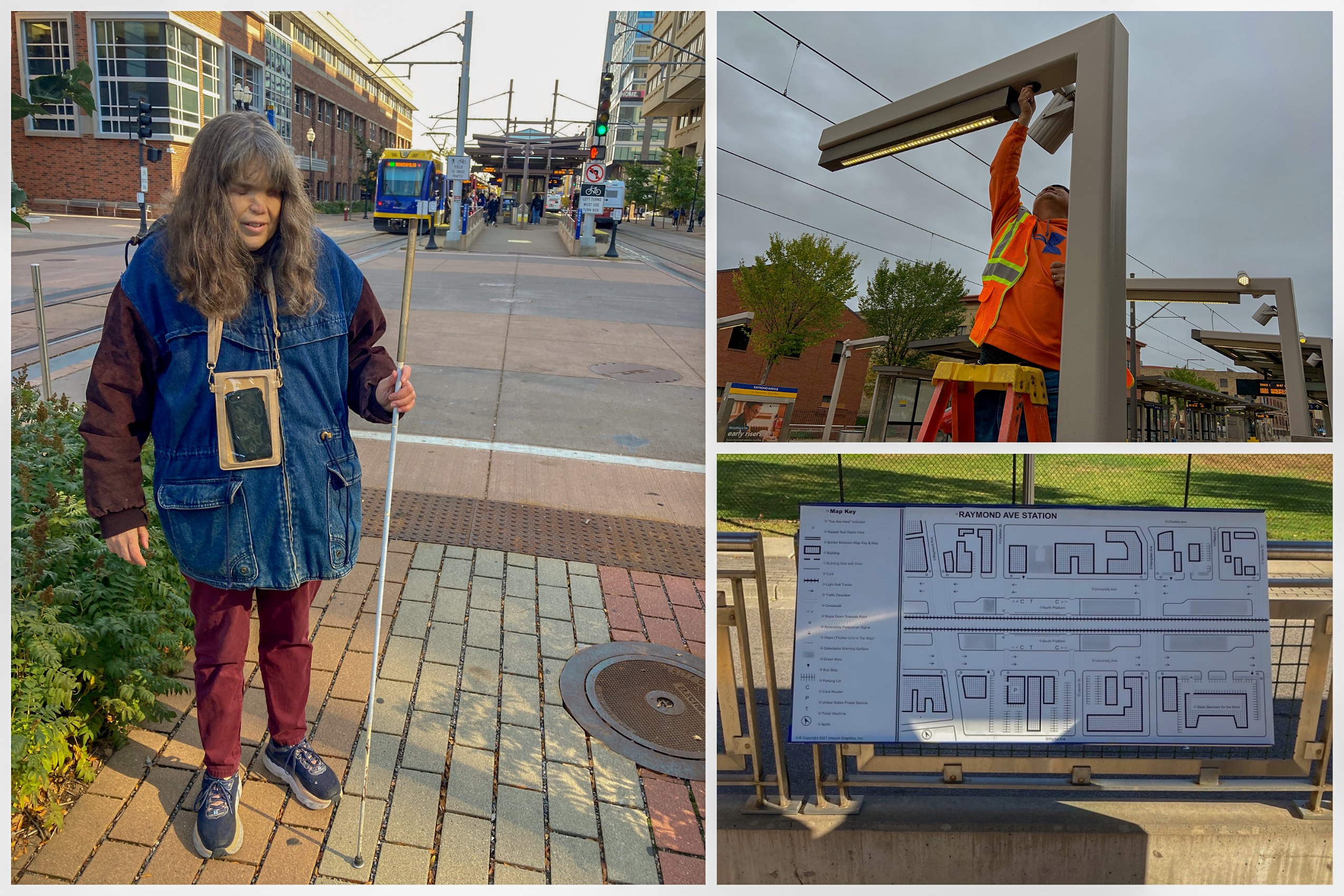
Clockwise from left: Sheila Enerson using the Aira app during a recent trip on the METRO Green Line, a beacon being installed at the Raymond Avenue Station and a new tactile map at the Raymond Avenue Station.
New technology could expand transit access for blind, low-vision customers
On a recent Friday morning, Sheila Enerson stepped out of her home, boarded a Route 17 bus, transferred to the METRO Green Line at Nicollet Mall, and made her way to the University of Minnesota.
It’s the kind of trip that, even after 30 years of taking transit, she’d normally avoid.
But on this day, Enerson, who has been blind since birth, navigated with the help of a trained representative who, through an app called Aira, could see each step she was making through her cell phone, hung from her neck and camera on.
Metro Transit recently began piloting the service to understand how it could help people like Enerson use transit more confidently.
“This gives me a lot more freedom,” Enerson said. “I feel like I can take the light rail right now instead of feeling like, ‘Oh no am I on the tracks?’”
The introduction of the Aira app isn’t the only step being taken to make transit more accessible to individuals who are blind or low vision, either.
In November, a group of blind and low-vision customers will be invited to help test technology that will provide audio instructions at and near the Green Line’s Raymond Avenue Station. The instructions come through an app using Bluetooth and beacon technology fixed to the station and other points nearby.
New tactile maps that can orient blind or low-vision customers are also being installed at the Raymond Avenue Station.
“The long-term goal of all these pilots is to understand what works best under certain conditions, and how we can deploy them at a larger scale,” Transit Information Manager Ben Rajkowski said. “It’s about taking more of a holistic approach.”
Existing tools for blind and low-vision customers include the use of braille and audio instruction at ticket vending machines, buttons at some stops that, when pressed, announce real-time departure information, and automatic on-board stop announcements.
Jennifer Kennedy, the executive director at Blind, Inc., said such tools are critical to people like her, her co-workers and clients who navigate the world without sight. Located on University Avenue, Blind Inc. is a non-profit that teaches blind people skills to become more independent, including teaching students how to use a long white cane when using the transit system.
Whatever new technology comes along, though, Kennedy said one of the most-effective and reliable way of connecting people who are blind and low-vision to transit services is often a call to a representative in the Transit Information Center.
“When it comes to transit, the first thing we have students do is make that phone call,” Kennedy said. “Apps are great, but sometimes you just want to talk to a person who knows all the information.”
During Enerson’s recent trip, she also had support from a trusted, in-person travel companion – Outreach Coordinator Doug Cook. Outreach Coordinators provide free, personalized training to individuals with disabilities.
Learn more
The Aira pilot will continue through March 2022. During the pilot, users can use Aira at no cost. Learn more at metrotransit.org/aira. Learn about working with an Outreach Coordinator at metrotransit.org/accessibility.